The cleats players wear in each sport are unique. Different sports require a cleat with different length spikes, different levels of ankle protection (e.g. low cut styles or high tops for extra stability), different weights, and even the right spike placement. Soccer, baseball, lacrosse, and even football cleats are designed to give the players of each sport the features they need to be successful. This enables them to maneuver their feet quickly with agility.
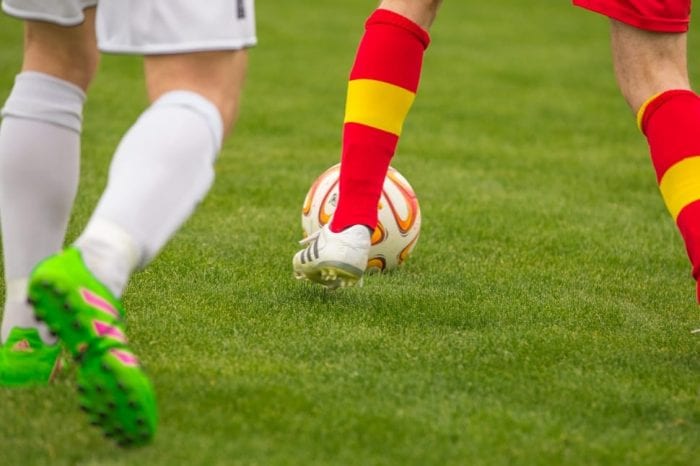
As a general rule, soccer cleats have the most versatility of all because they are the most minimalist. Most soccer cleats have short, plastic spikes that are placed all around the bottom of the shoe but not on the toes. The cleats are also usually low around the ankle for maximum mobility. Wearing them allows the player to change directions quickly, often with a top speed.
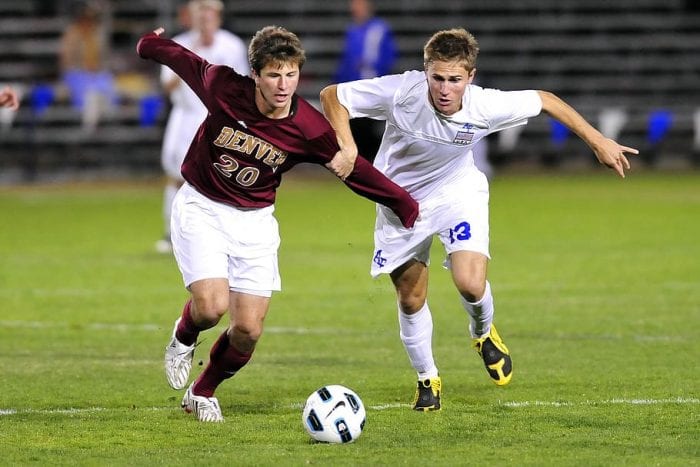
Choosing the right shoes that can help tackle force and withstand heavy plays is a must when playing the sport because it can affect your performance. In this article, we will be looking at the best football and soccer cleats from Amazon. We made product descriptions for each one so you can sort your options. We also included a detailed summary of the main differences between football and soccer cleats. Further, we also include FAQs, so keep reading to know what really are the main differences between soccer and football cleats.
Shoes With Cleats
Adidas 19.3 Men’s Predator
- The Predator boots have excellent quality. They are comfortable to wear and fit snugly even without breaking them in. They’re also very light and offer great traction.
- It has a stylish design and comes in different colors to choose from.
Adidas Men’s Nemeziz 19.3 Firm Ground Soccer Shoe
- It features a soft mesh upper that offers responsive touch to enhance your performance during your game. It also has a mid-cut design to provide support to your ankle when you twist, strike, and turn. These are some of the best cleats on the market today.
ASHION WETIKE Kids Soccer Cleats
- They promise solid midsole support, enhanced grip traction, protective uppers, and maximum comfort during play, whether you prefer to strike or not. They also have an attractive design that your kids will love.
Adidas Performance Mundial Team Turf Soccer Cleat
- They are not your ordinary soccer cleats (in my opinion, too). It has a classic design, and the style looks very high fashion without compromising your performance when you play.
- It is made with soft leather and it has a lightweight design that allows you to run free without inhibition on the field.
Soccer And Football Cleats: Are They Different?
There are differences between football cleats and soccer cleats. All of those different elements of contribute to their lightweight design, which is essential to the large amounts of tags and running that soccer players do. As such, their cleats favor lightness over structure, as running is what a soccer player will likely spend the most amount of time doing in a game. The upper part is made up of synthetic leather or mesh to achieve better ventilation and lessen the occurrence of sweating. Playing soccer requires that you be able to keep up your endurance. A bit heavier shoes may tire players out more quickly.
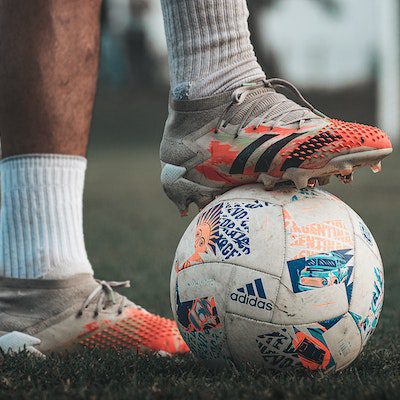
That said, soccer cleats do have some structure. They tend to be relatively narrow but also flat across the top of the foot, including the big toe, for optimal kicking. A soccer shoe has a design that makes it easier for players to control the ball throughout a soccer game.
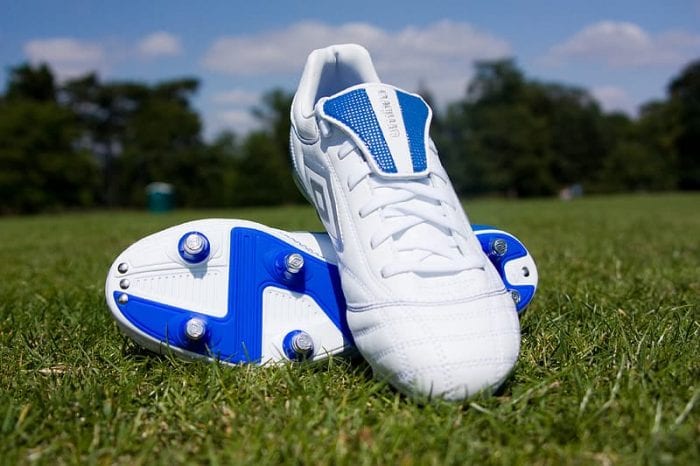
The cleat spike distribution can vary, but soccer cleat spikes are almost always made out of plastic in non-professional cleats and never have a spike on the toe, although it has to have a wide shape.
Some, like those made for baseball and lacrosse, do have a spike on the toe, which can help with the quick acceleration needed in those sports but can be dangerous for other sports, like football and soccer. A toe cleat can ultimately end up in serious injuries to other players in a soccer game because virtually the entire game is played with the feet. Whether it’s youth soccer or adult soccer, it wouldn’t matter. If you check the cleat pattern, you’ll see there is never a toe cleat at the front tip of a soccer player’s shoes.
Those made for football, however, do not have any toe spikes. The distribution of the cleat spikes is relatively similar to that of soccer because the cleat spikes are all concentrated under the foot. This is ideal for sports with the possibility of contact since they are less likely to hurt another player.
Football cleats are different from those of soccer, though, insofar as they usually have much more support. They have more padding to protect players. This is because while soccer favors constant running, a football player often deals with pressure to stay in one place or to push forward more slowly. The wearing of football cleats helps players who need proper traction to accelerate, and turn on a dime, and helps to slow or stop them when it’s necessary.
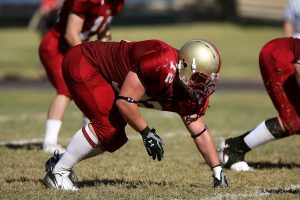
The level that football & soccer cleats come up on a player’s ankle varies slightly by the player’s position. The highest cut ankle support is for the players who run less, like offensive and defensive backs, while medium cut is for players like linebackers who are running backs and quarterbacks. Players that need the most speed, like cornerbacks, safeties, and wide receivers, have low-cut cleats. Even for the players that do a lot of running, simply wearing running shoes is not a good idea. The absence of a football cleat will lessen the player’s maneuverability on the football field.
The cut also affects their weight, so low-cut favor players who need to run faster and farther because they tend to be lighter, while players who benefit from more weight are best suited for heavier cleats.
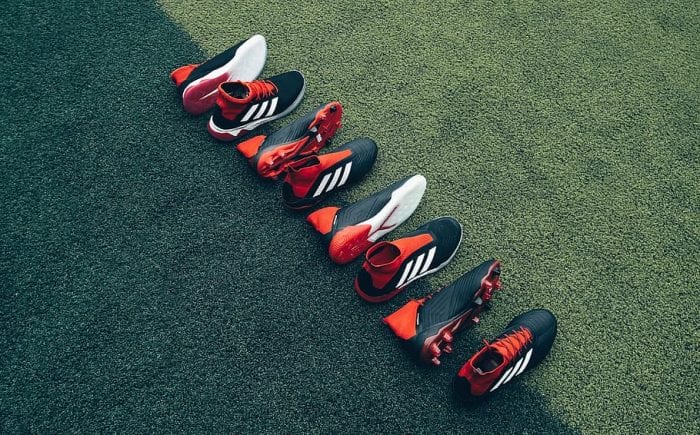
Similarly, most American football cleats have much longer cleat spikes. Those spikes dig deep into the ground, increasing traction for players. The actual length can vary depending on player preference, but they are consistently longer and pointier than soccer cleats, providing better control and better speed. This is one of the most important differences between soccer and American football cleats.
Those made for football also tend to be made out of a much thicker material than other sports to protect players’ feet in case they get stepped on. This thicker material is among the important differences in design. In contrast, lightweight cleats are designed to reduce fatigue and offer a lightweight feel, which is essential in sports requiring quick movements and agility.
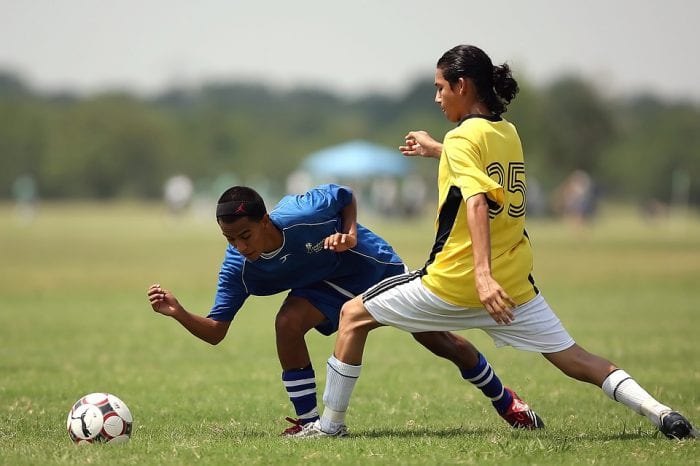
In a pinch, a player could use soccer cleats for football, but most soccer leagues would not permit the use of football cleats for soccer. This is because those for soccer are much more minimalist, often reflecting a low-cut design. They might be detrimental to the player wearing them in football because of a lack of support. Wearing a proper pair prevents hurting the player, which is often the purpose of regulations on cleats.
A player cannot use either baseball or lacrosse cleats for either football or soccer because of the extra toe cleat spike, which could pose a danger to other players in either football or soccer. Those for baseball are especially dangerous because they sometimes have metal pieces.
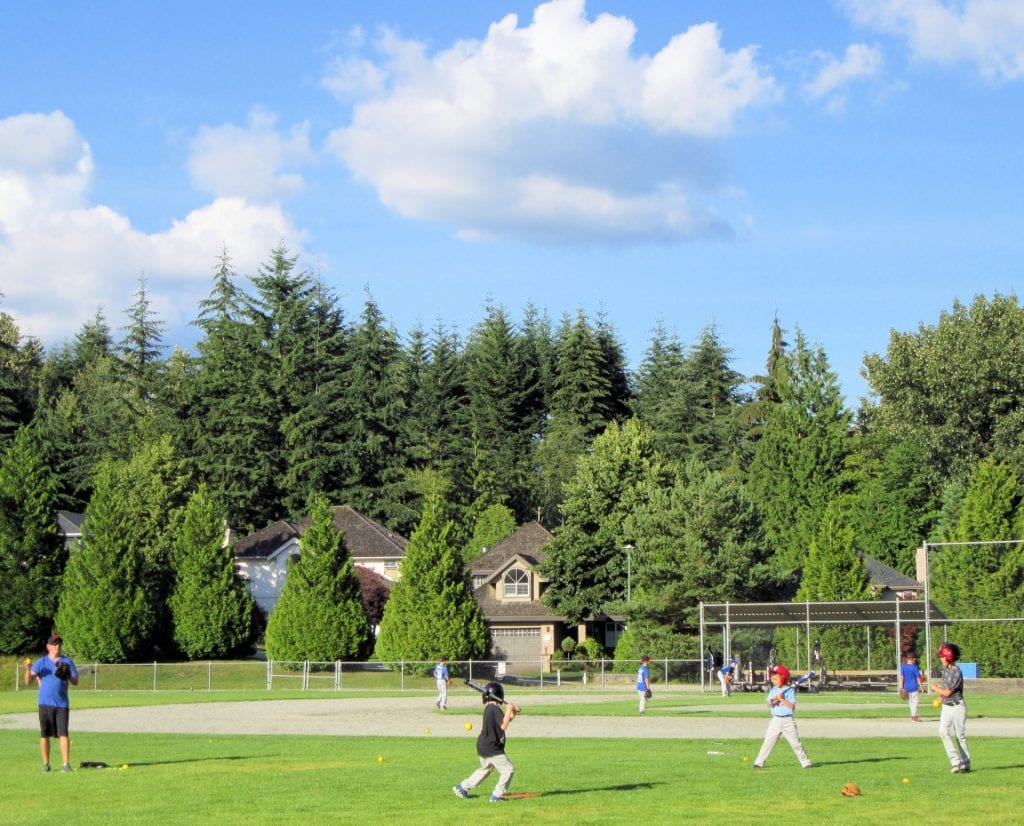
A baseball cleat is often made of metal. The sport is, generally, not a contact sport. It’s much less likely that a player will injure another with their pair of cleats. Baseball and soccer are played much differently. Baseball shoes rarely come into contact with another person. For the most part, baseball shoes only contact the ground and the bases. The game is played with hands and important equipment, such as gloves and bats. The field is very different also. Part of the field is covered in dirt for any type of league baseball. That requires a different kind of baseball cleat to make sure players can get good traction to keep them from slipping.

Conclusion
For those who play soccer, the needs are different. The field is completely covered in grass. If the cleats are too long or too sharp for those who wear soccer cleats, there’s a risk of injuries just from the cleat getting stuck in the sod. A player’s shoes are very important when it comes to most sports, so buy soccer cleats for playing soccer, baseball shoes for playing baseball, basketball shoes for playing basketball, and lacrosse cleats for playing lacrosse. Don’t go into buying soccer cleats thinking they’re all the same. Soccer and baseball, football, and other sports, all have their own special equipment, including shoes. It’s designed to keep players safe and help them perform the best in their respective sports. When shopping, besides choosing the pair with a nice snug fit, always consider the surface you will be playing on and the playing style for a safe and fun game time.
Frequently Asked Questions (FAQs)
What Are The Differences Of Football & Soccer Cleats?
Believe it or not, soccer, baseball, football, and lacrosse cleats have key differences. That means that you often cannot wear cleats meant for one sport in another sport.
In general, baseball and lacrosse cleats are the most similar because they both have a toe cleat, but lacrosse are often cut higher than baseball cleats for better ankle support. The other kinds of cleats tend to be lower cut. Baseball and soccer cleats are quite different, though. Wearing baseball cleats for soccer is ill-advised and often not allowed because the nature of the play is so different. Soccer and baseball cleats serve different purposes, and league baseball cleats would be much more dangerous for a soccer player due to the role of the feet in the game and the contact level of the sport.
The actual cleat spikes on the bottom of the shoe for football are longer than cleat spikes for any other sports because they are made primarily for traction, while the cleat spikes on ones made for soccer are shorter to promote easy movement.
Do Football And Soccer Use The Same Cleats?
Do Soccer Cleats Work For Football?
Soccer and football are two sports played differently. But in a pinch, you could use soccer cleats for football because they do not technically break any of the usual rules for the requirements for football. In fact, some kickers and punters of football use soccer cleats.
It is not advisable to do so, though. That is because the cleat spikes are shorter, and the ankle supports less for soccer. Using those made for soccer in football can be dangerous. Further, there are also differences in the stud layout. The front toe stud/spike of the football cleats is absent in the soccer cleats. The longer studs are very important in blocking or pushing forward because they give more traction during acceleration and jumping. Also, soccer cleats may not provide the needed traction on artificial surfaces since they are designed specifically for surfaces with natural grass. It’s ok to wear soccer cleats if you don’t have a choice, but you should try to have football cleats for playing football.
Do Cleats Make You Faster?
Yes, they can make you faster because they can help you get better traction on the ground for a strong push-off and easy acceleration. For example, lacrosse cleats have a cleat spike close to the toe that allows players to push off. While there isn’t one of these for soccer, baseball cleats do have the toe spike, as well.
Can You Wear Baseball Cleats For Football?
You cannot wear baseball cleats for football because those for baseball have a cleat on the toe that would hurt another player’s foot if someone wearing a baseball cleat stepped on it. League baseball players don’t do nearly as much in terms of contact with other players, therefore it’s much less likely they’re going to cause injury to another player by stepping on them with a toe cleat.
Do Cleats Make A Difference?
In sports like soccer, baseball, football, and lacrosse, cleats make a difference. They provide necessary traction for planting your feet while playing a sport and can also help with speed, especially if you play on grass. If you play soccer, baseball, softball, football, or lacrosse, cleats are certainly going to help you up your game.
Most major shoe brands have lines of sports shoes and cleats. For instance, you can check out Adidas Performance Cleats, where you’ll find a variety to choose from. Just remember that football, baseball, and soccer cleats are all different, so buy accordingly.
Are Metal Cleats Allowed In Football?
The rules on metal cleats in football vary, but in general, you cannot wear those that have all-metal spikes in football. But some leagues allow for cleats with metal tips. Although they are allowed in baseball, football does not usually allow them. That is because they can be dangerous if a player steps on another player’s hand, which is much more likely in football.
Metal cleats are much more common for baseball and soccer cleats; however, they are not made of metal. The feet of players come in close contact with other players of soccer, baseball isn’t played that way, though. Cleats on the shoes are plastic for soccer, baseball often has metal spikes.
Why Are There No Toe Cleats In Soccer?
How Can You Tell A Football Cleat?
What Are The Differences Between Soccer And Football?
Can Soccer Cleats Be Used For Football?
Why Can’t I Find Football Cleats?
What Type Of Cleats Are Used In Soccer?
Which Cleats Are Best For Football?
Last Updated on August 14, 2025 by Inma Barquero
DISCLAIMER (IMPORTANT): This information (including all text, images, audio, or other formats on FamilyHype.com) is not intended to be a substitute for informed professional advice, diagnosis, endorsement or treatment. You should not take any action or avoid taking action without consulting a qualified professional. Always seek the advice of your physician or other qualified health provider with any questions about medical conditions. Do not disregard professional medical advice or delay seeking advice or treatment because of something you have read here a FamilyHype.com.